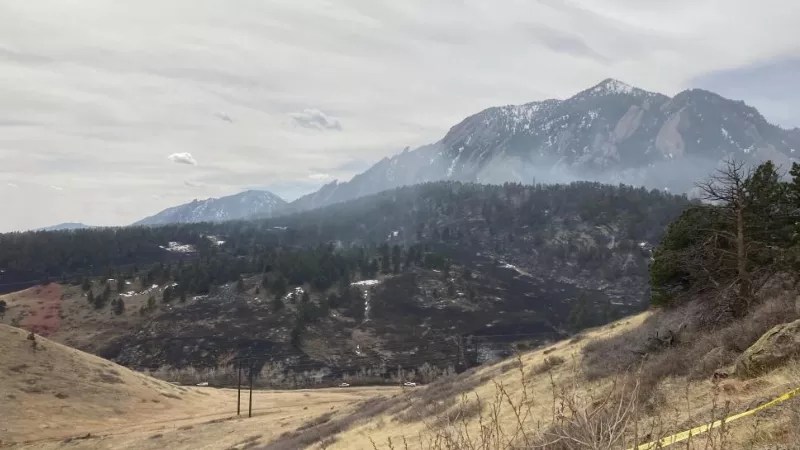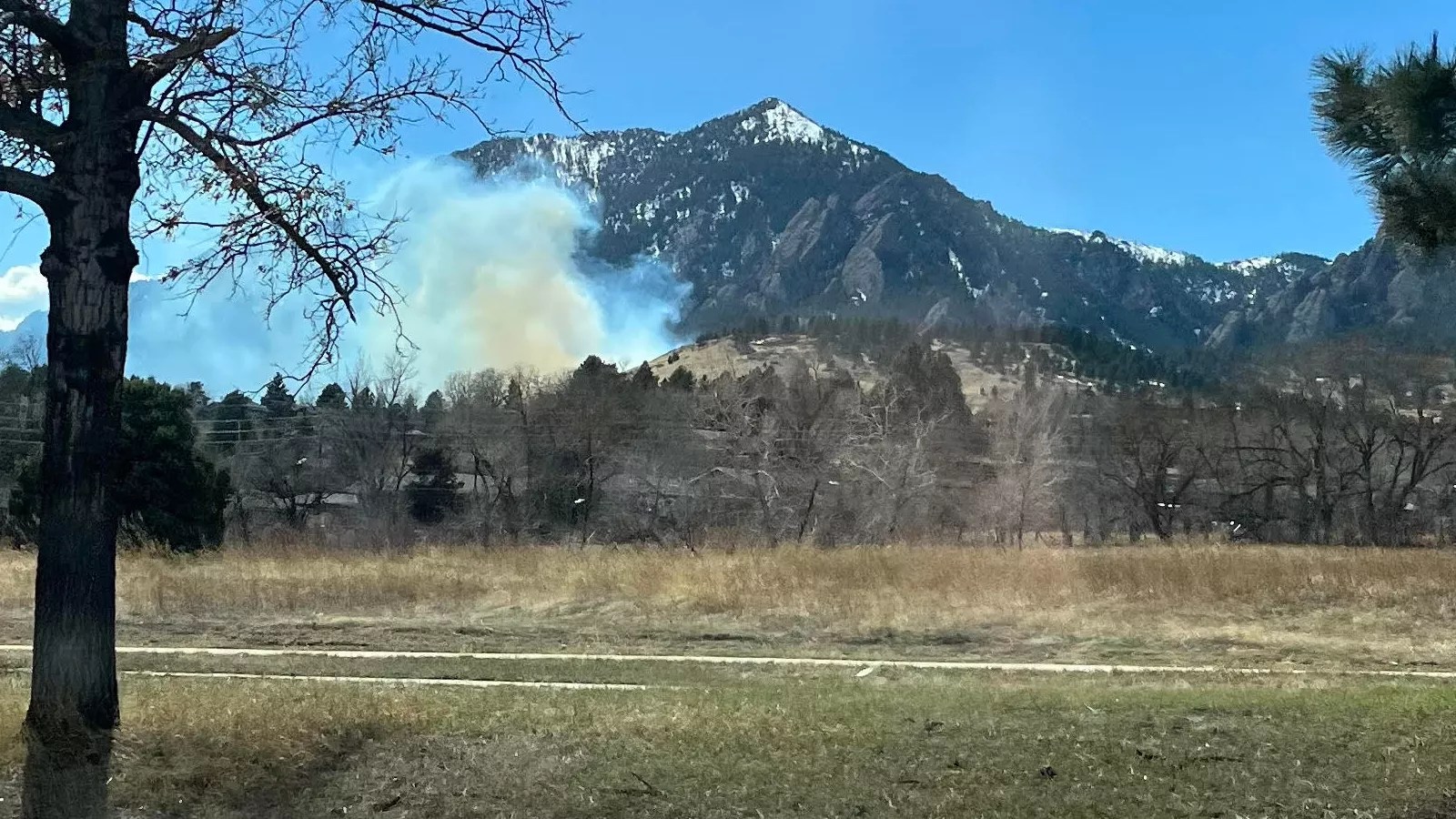

Audio By Carbonatix
The latest update on the Boulder NCAR fire, which broke out March 26 near the National Center for Atmospheric Research, contains good news: The blaze remains at around 189 acres in size, containment has reached 35 percent, and all evacuations have been lifted.
But while a worst-case scenario like the Marshall fire that devastated much of Boulder County in late December appears to have been avoided, the risk of conflagrations remains high in many other parts of Colorado, where red flag warnings are currently in effect.
By coincidence, my wife and I went to Boulder on Saturday to enjoy the gorgeous weather while strolling the Pearl Street Mall. We were driving home around 2:20 p.m. when we noticed smoke above NCAR; within minutes, emergency vehicles began roaring past us toward the nascent conflagration.
Here’s a photo taken as we drove past:

Photo by Deb Roberts
Shortly thereafter, at 2:59 p.m., the City of Boulder tweeted: “We are aware of a fire in the city open space near NCAR. Please avoid the area & do not call 911 to report it. Some pre evacuations are being sent out…. More to come.” And indeed, the Boulder Police Department checked in five minutes later with this: “This is being called the #NCARFire The @bouldercolorado EOC has been activated. Wireless Emergency Alerts have been sent to ALL cell phones within a 1/4 mile radius from NCAR. Message is to EVACUATE area due to fast moving wildfire.”
The evacuation area around NCAR, which is located at 1850 Table Mesa Drive and includes
Colorado’s last building designed by I.M. Pei, eventually grew to 1,629 people, 699 housing units and 836 people. Meanwhile, authorities staged their first press conference:
NCAR Fire Press Conference 1 from City of Boulder on Vimeo.
Fortunately, the blaze didn’t explode in size, as the Marshall fire did. At 9:27 a.m. on March 27, the Boulder Office of Emergency Management offered this update:
Fire 21 percent contained
Approximately 200 acres
Zero structures lost
Zero injuries
Zero missing persons
Cause: Under investigation, probable origin point identified
Plan for Sunday, March 27:
About 110 firefighters working on fire
Firefighters will aim to continue to corral fire into rocks and snow, reinforce fire line to keep fire away from the City of Boulder and Eldorado Springs
2 fixed-wing air tankers will support
Crews reevaluating evacuation areas and may update as conditions change later in the day/evening
Weather will be hot and dry, with wind gusts up to 20 mph
All hiking trails in the area will remain closed
By 4 p.m., the containment of the NCAR fire had risen to 35 percent and it had not grown in size since that morning. Officials felt comfortable enough with the situation that all evacuations were lifted about an hour later – but individuals near the fire were warned to “stay alert should conditions change.”
Still, fire danger in other areas around the state remains high. At 3:15 a.m. today, March 28, the National Weather Service office serving Denver and Boulder issued a red-flag warning in effect from noon through 8 p.m. for Elbert County, as well as central and eastern Douglas County, at elevations above 6,000 feet, as well as northeast and southeast Elbert County and the northern section of Lincoln County below 6,000 feet. Why? Winds from the southwest at 10 to 20 miles per hour, with gusts up to 25 mph, plus relative humidity as low as 8 percent. “Any fire that develops will likely spread rapidly,” the NWS warns. “Outdoor burning should be avoided, as well as any activity that may produce a spark.”
Shortly thereafter, at 3:50 a.m., the National Weather Service in Pueblo issued a red-flag warning in effect from 11 a.m. to 9 p.m. for the San Luis Valley, Fremont and Teller counties, as well as all of the southeast plains. Winds of 10 to 20 miles per hour are predicted for these areas, with gusts up to 35 mph, and the relative humidity is likely to be as low as 7 percent – conditions that are described as “favorable for rapid rates of fire growth and spread.”
These alerts make it clear that in Colorado these days, fire season lasts all year long – and a University of Colorado Boulder study shared by the scholarly publication Science Advances on March 16 shows that such scenarios don’t stop at the state line. The key takeaways: “New research reveals that wildfires have gotten larger, more frequent and more widespread across the United States since 2000. Large fires have not only become more common, they are also spreading into new areas, impacting land that previously did not burn. While fires across the entire contiguous United States increased during the years 2005-2018 compared to the previous two decades, fire frequency quadrupled in the Great Plains during this time.”
And as CU knows all too well, the pace has definitely picked up in Boulder.